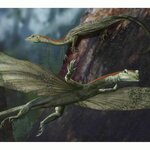Ecology & Zoology

Cooperation in animals has long been a major focus in evolutionary biology. In particular, reciprocal altruism, where helpful acts are contingent upon the likelihood of getting help in return, is especially intriguing because it is open to cheaters.
In a new study published this week Claudia Rutte and Michael Taborsky demonstrate the first evidence for generalized reciprocal cooperation in non-humans. The authors show that rats who received help in the past were more likely to help another unknown partner.
Although many models have predicted reciprocal altruism, scientists had found…

Ongoing field trials since 2002 by a team that includes 16 farmers, Cornell researchers and Cornell Cooperative Extension field crops educators in 10 counties are showing the value of on-farm research. Their results are successfully quantifying and predicting the nitrogen needs for growing corn, saving farmers money and reducing environmental impact.
"With this program, we focus on determining under what situations extra nitrogen would be good to add and when a farmer can save money by reducing fertilizer applications without impacting yield and quality," says Quirine Ketterings, associate…
Picking a mate isn’t easy—if you are a female iguana. In a study Maren Vitousek of Princeton University and colleagues found that female Galápagos marine iguanas spend a lot of energy picking a mate from a wide range of suitors – energy they could otherwise spend foraging, producing eggs, or avoiding predators.
Scientists have generally assumed that being choosy about potential mates carries low costs for females. These costs were thought to be particularly small when male territories are clustered together in groups, known as ‘leks’, which make it possible for females to assess many…

Fish use the threat of punishment to keep would-be jumpers in the mating queue firmly in line and the social order stable, a new study led by Australian marine scientists has found.
Their discovery, which has implications for the whole animal kingdom including humans, has been hailed by some of the world’s leading biologists as a “must read” scientific paper and published in the Proceedings of the Royal Society of London Series B.
Studying small goby fish at Lizard Island on Australia’s Great Barrier Reef, Dr Marian Wong and colleagues from the ARC Centre of Excellence for Coral Reef Studies…

A bee’s favorite color can help it to find more food from the flowers in their environment, according to new research from Queen Mary, University of London.
Dr Nigel Raine and Professor Lars Chittka from Queen Mary’s School of Biological and Chemical Sciences studied nine bumblebee (Bombus terrestris) colonies from southern Germany, and found that the colonies which favored purple blooms were more successful foragers.
Dr Raine explains: “In the area we studied, violet flowers produced the most nectar - far more than the next most rewarding flower color (blue). Inexperienced bees are known to…

The extinction of many large mammals at the end of the Ice Age may have packed an even bigger punch than scientists have realized. To the list of victims such as woolly mammoths and saber-toothed cats, a Smithsonian-led team of scientists has added one more: a highly carnivorous form of wolf that lived in Alaska, north of the ice sheets.
Wolves were generally thought to have survived the end-Pleistocene extinction relatively unscathed. But this previously unrecognized type of wolf appears to have vanished without a trace some 12,000 years ago.
The study combined genetic and chemical analyses…

A specimen of the Wollemi pine, an Australian conifer and one of the world's oldest tree species, has been donated to Bergianska Garden at Stockholm University in Sweden.
The Wollemi was discovered on September 10, 1994, in an isolated valley in Wollemi National Park in New South Wales, about 150 km northwest of Sydney. It is estimated to be about 200 million years old, from earth's Jurassic Period, so it was around even before the Australian continent was formed.
Wollemi Pine sample
The Wollemi is an extremely rare tree that is in danger of extinction, with fewer than 100 specimens in the…

It's no secret that humans can recognize siblings on a biological level. Now it turns out plants can also, according to biologists at McMaster University. Even more, they get downright competitive with strangers of the same species.
“The ability to recognize and favour kin is common in animals, but this is the first time it has been shown in plants” said Susan Dudley, associate professor of biology at McMaster University in Hamilton, Canada. “When plants share their pots, they get competitive and start growing more roots, which allows them to grab water and mineral nutrients before their…

A remarkable new long-necked, gliding reptile discovered in 220 million-year old sediments of eastern north America has been discovered, scientists report. Mecistotrachelos apeoros (meaning "soaring, long-necked") is based on two fossils excavated at the Solite Quarry that straddles the Virginia-North Carolina state line.
CLICK ABOVE FOR FULL SIZE.Image of Mecistotrachelos apeoros. Restoration artwork courtesy of Karen Carr.
Nick Fraser of the Virginia Museum of Natural History, who discovered the fossils, said said "one of the really neat things about the new glider is the feet. They are…

In flowers called columbines, evolution of the length of nectar spurs--the long tubes leading to plants' nectar--happens in a way that allows flowers to match the tongue lengths of the pollinators that drink their nectar, biologists have found.
Darwin once proposed a co-evolutionary "race" to explain how natural selection might account for the evolution of very long nectar spurs in flowers, said Scott Hodges of the University of California at Santa Barbara. "In Darwin's race, plants with the longest spurs and pollinators with the longest tongues [to tap the flowers' nectar] would be favored…